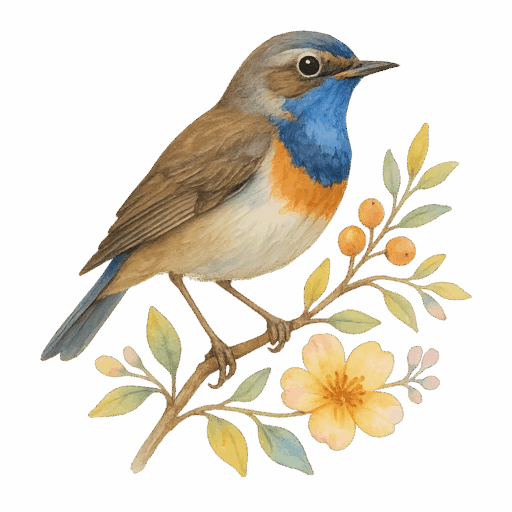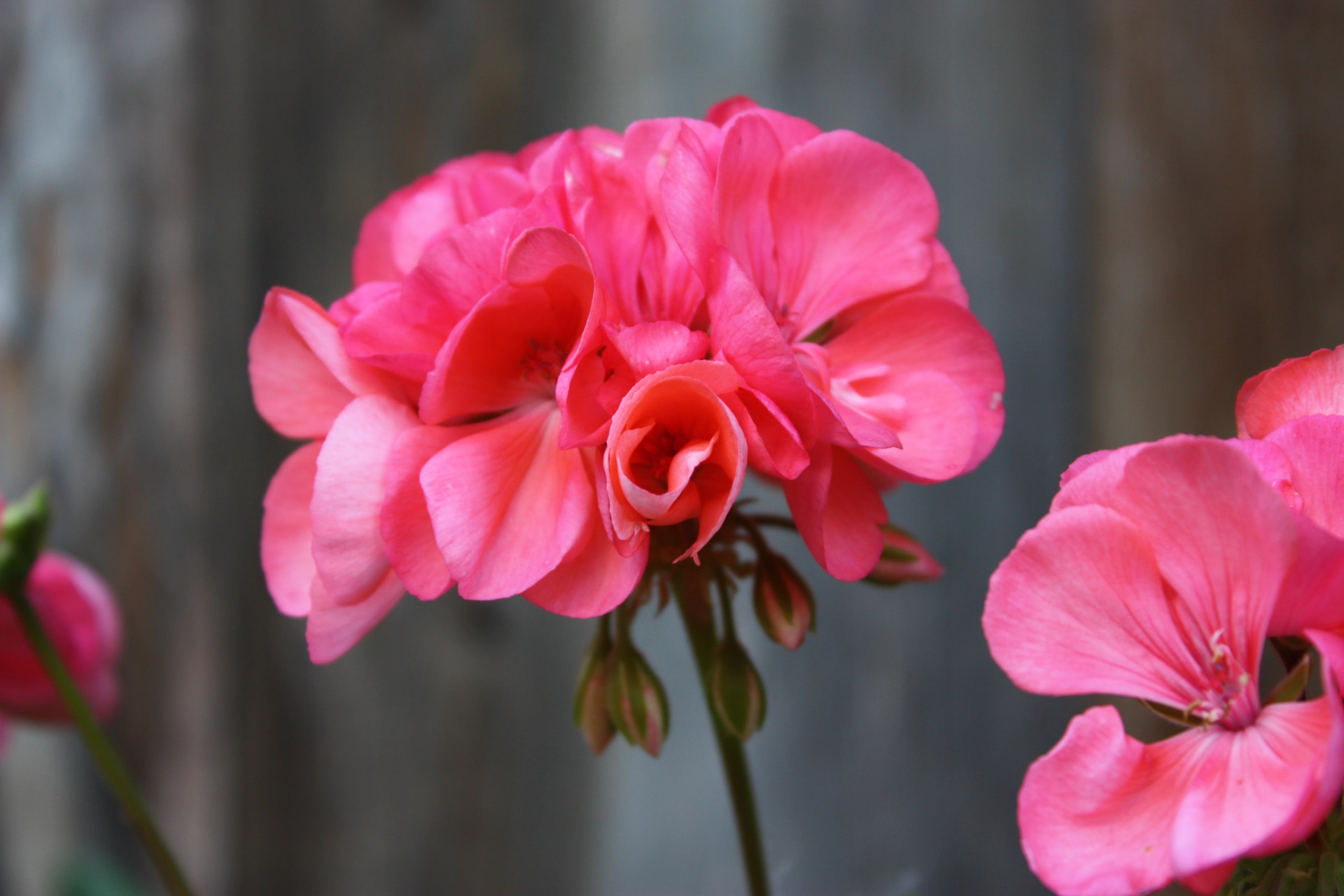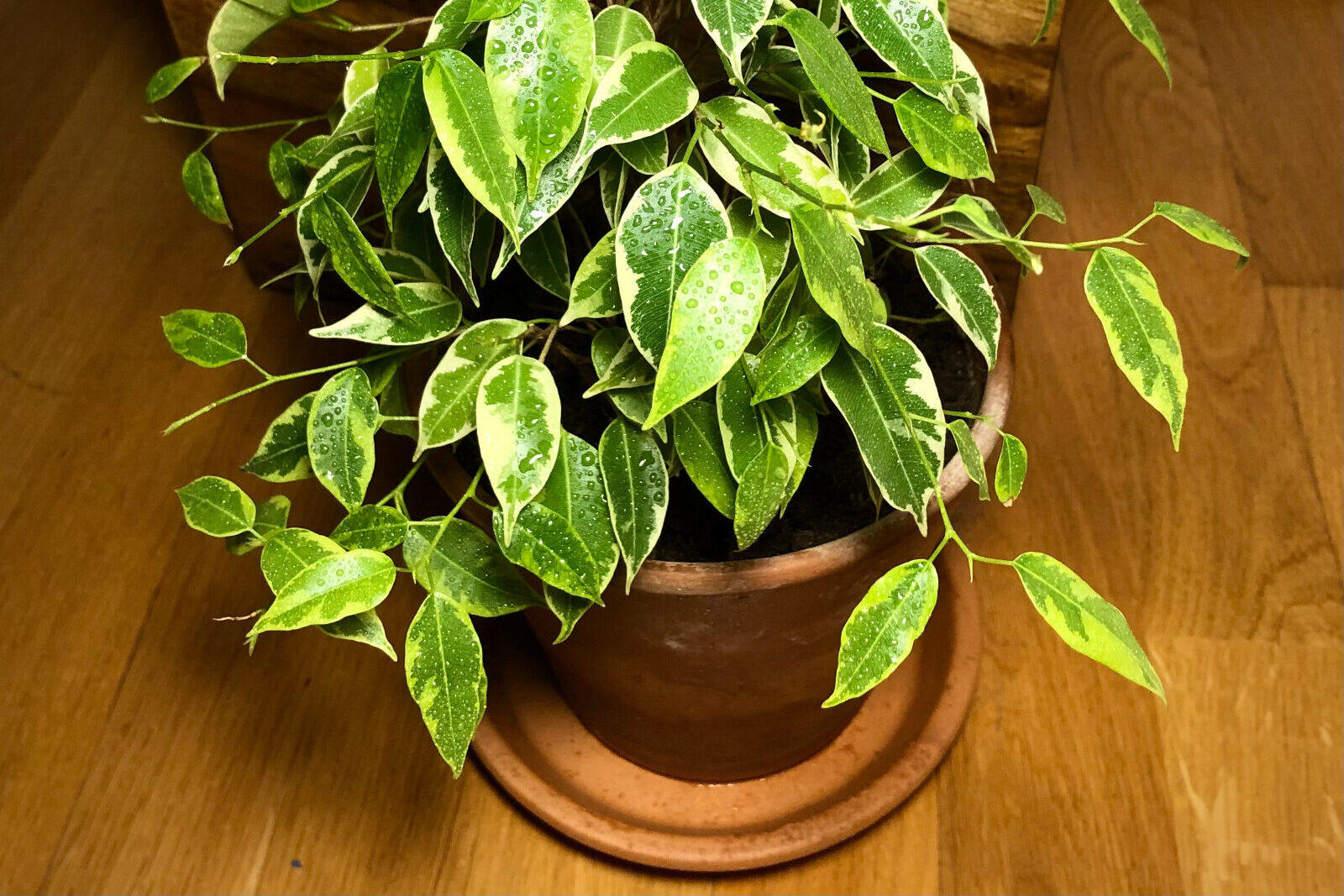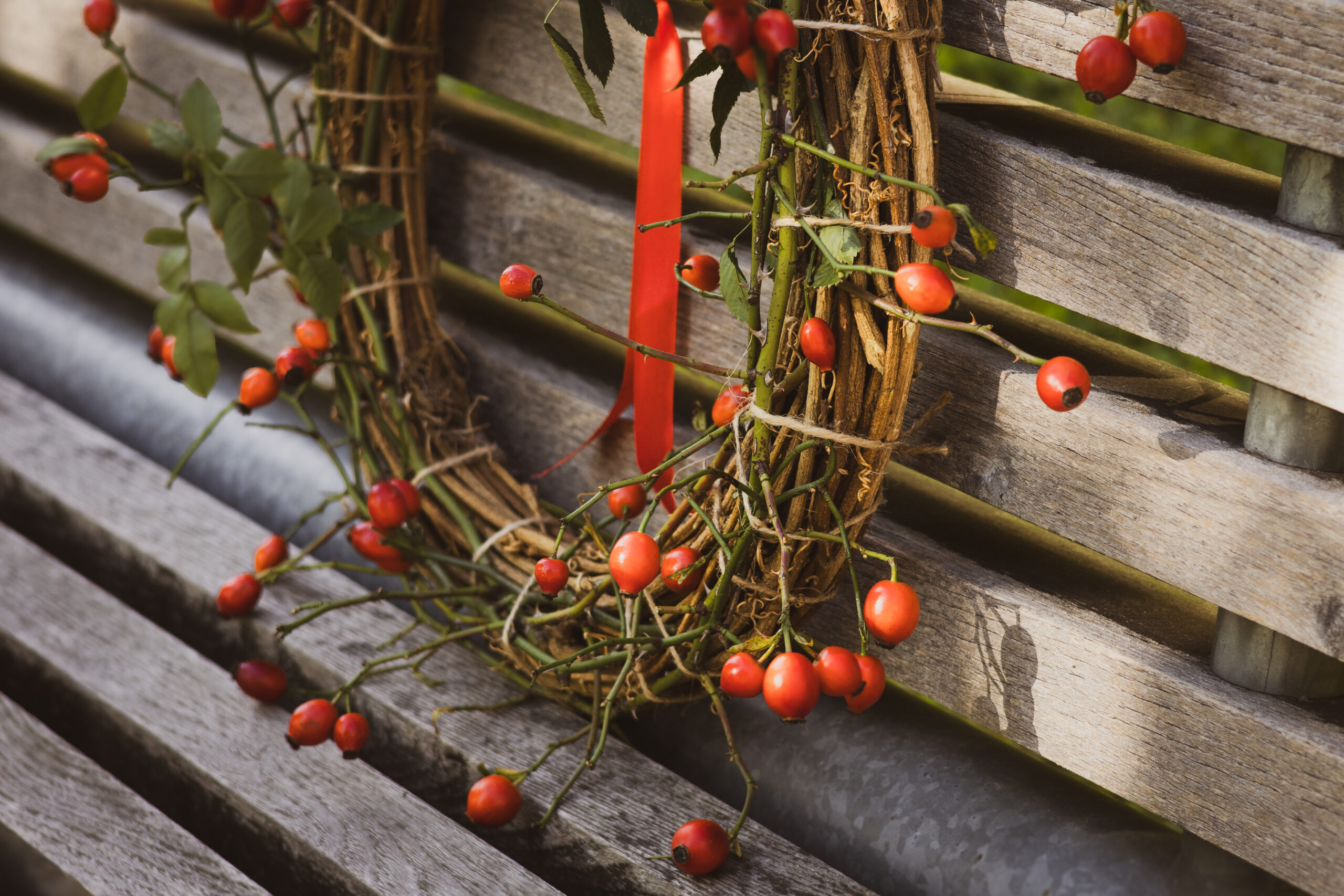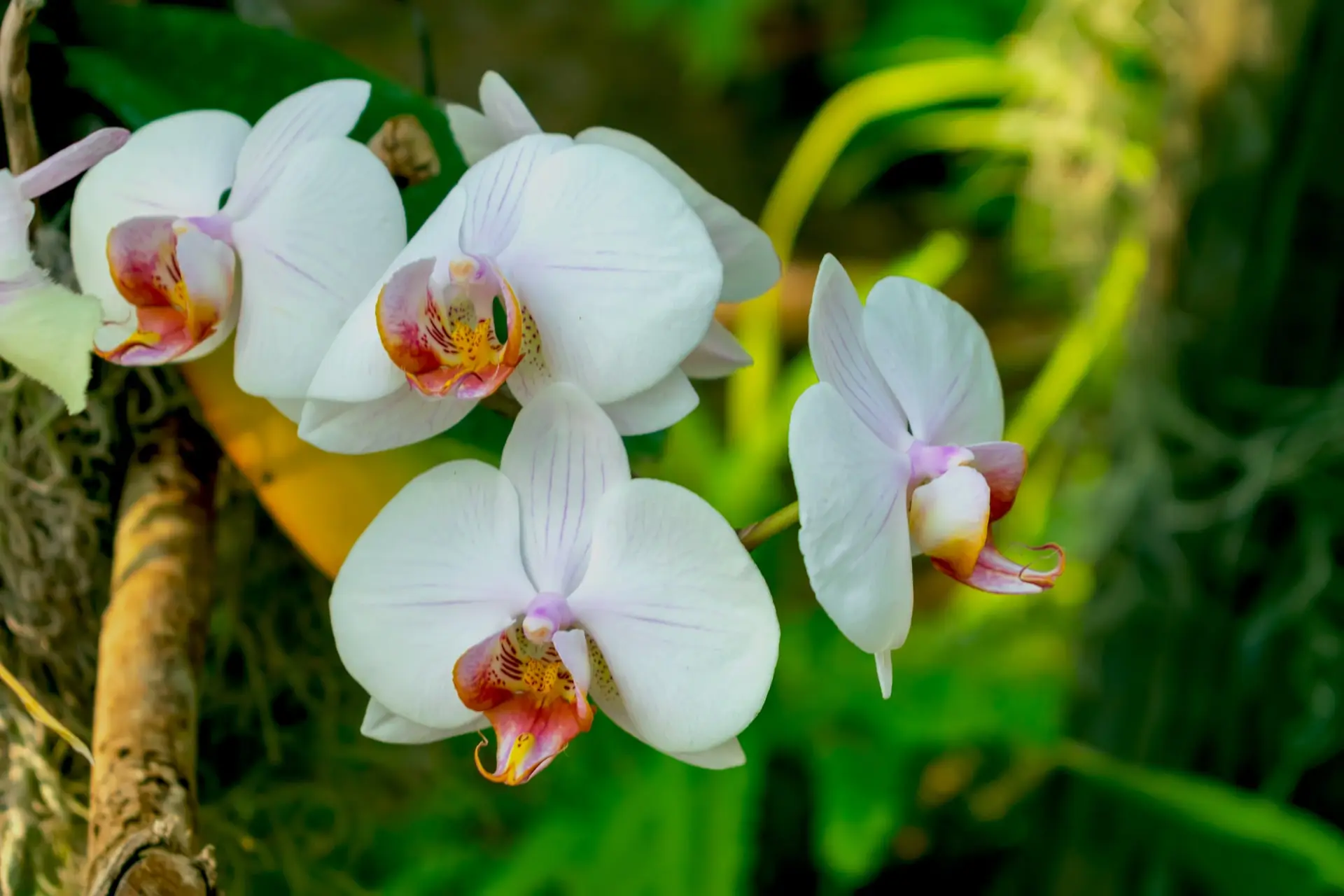
How to Grow Beautiful Orchids? Learn Their Language
Many plant parents talk to their houseplants. I also secretly talk to them. :o) In my mind, I express my gratitude, admiration or apology to them. When I go to water my plants, I greet them. Have you ever noticed that houseplants are not only good listeners, but they can sometimes be – even without words – very talkative?
Only by learning to understand the mysterious language of plants, we can satisfy their needs and enjoy the love they send back our way. Today, we’re going to learn how to understand the orchid language, especially the one of Phalaenopsis orchids. Your tropical beauties might have something to say. So let’s get to it!

1. When the leaves speak
The easiest way for an orchid to communicate with you is through its leaves. This may come as a surprise but when you’re an orchid :o), you can say a lot with your leaves. It’s really a wide range of information, sometimes even contradictory. The leaves can change their color, structure, they can wilt. Let’s begin with the basics. Here are useful “phrases” represented by the color of orchid leaves.
💚 Green Leaves
Medium Green: “I’m healthy.”
Proper orchid leaves are colored in bright green (imagine the color of grass). The leaves shouldn’t be too dark or yellow. Medium green orchid is probably in the process of active growth. If not blooming already, it’s slowly but surely getting ready to do so.
Dark Green: “I need more light.”
How to reply to this orchid? You appreciate your orchid’s honesty and place it to a sunnier location (except the direct light, your Phal wouldn’t thank you for that).
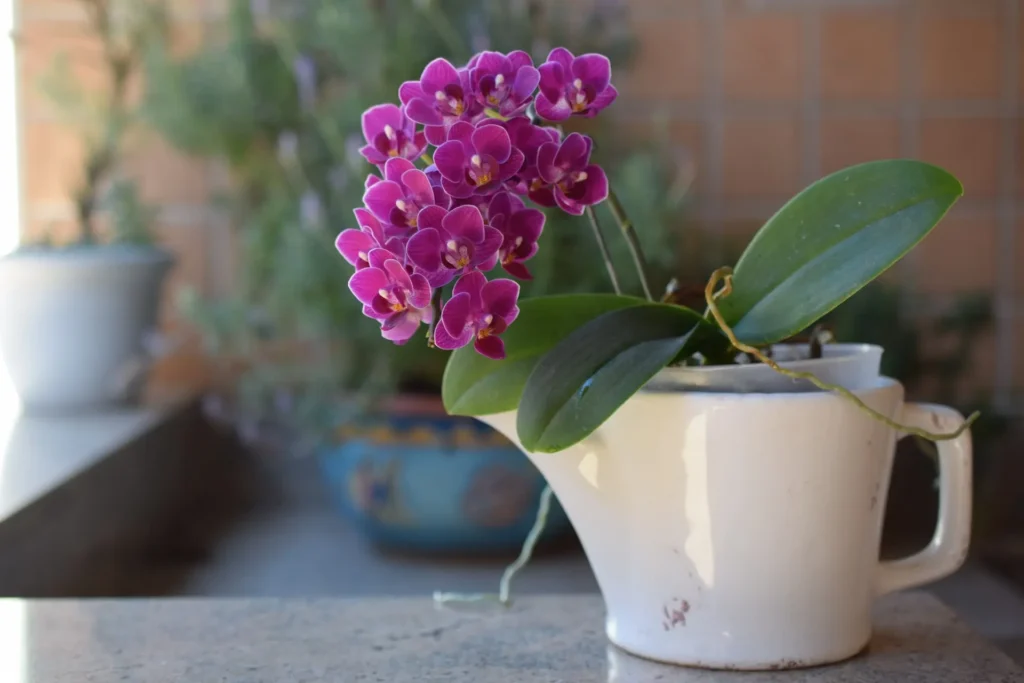
💛 Yellow Leaves
Yellowing lower leaf: “I don’t need this leaf anymore.”
The old must give way to the new. Your Moth orchid, as we also call Phalaenopsis, reserves its energy and space for the new growth. The orchid parent can acknowledge that and assure the plant it has all the time it needs to shed the leaf. And also that the mess it will leave on the windowsill is no big deal.
Yellowing from the center: “Help me, please!”
This is your Phalaenopsis crying out that something’s wrong – especially if several leaves are yellowing at once. It might mean overwatering and root rot, or dehydration and thirst. Sometimes it’s a sign of too much or too little fertilizer.
❤️ Red or Purple Leaves
Reddish or purplish tint: “You’re giving me lots of light, and I’m protecting myself.”
This isn’t always bad. Orchids with pink or purple blooms naturally have reddish pigments in young leaves. But older leaves turning reddish may indicate too much sunlight – or a magnesium deficiency, which causes irregular chlorophyll formation and red discoloration.
🤍 White or Black Spots
White or black patch: “The sun burned me! Please give me shade or move me.”
Phalaenopsis orchids don’t need as much light as we often think. They thrive best on east-facing windowsills. Direct summer sun through an unshaded south-facing window can easily scorch them.
2. If Roots Could Talk
Ever wish you could read from a crystal ball? Learn the language of orchid roots and you’ll predict your plant’s health at a glance. Even Baba Vanga would be impressed. :o)
Orchids are epiphytes – plants that grow on other plants (from Greek epi = on, phyton = plant). In the wild, they live attached to tree bark in tropical forests, absorbing nutrients from rainwater that falls several times a day. Their roots also anchor them to the host tree.
In pots, the substrate mainly serves as physical support for these roots.
Wild orchids don’t grow upright like we keep them. In nature, they cling sideways to bark with roots freely exposed to air. At home, we force them to grow straight in pots – so some roots grow down into the bark, while others grow upward as aerial roots.
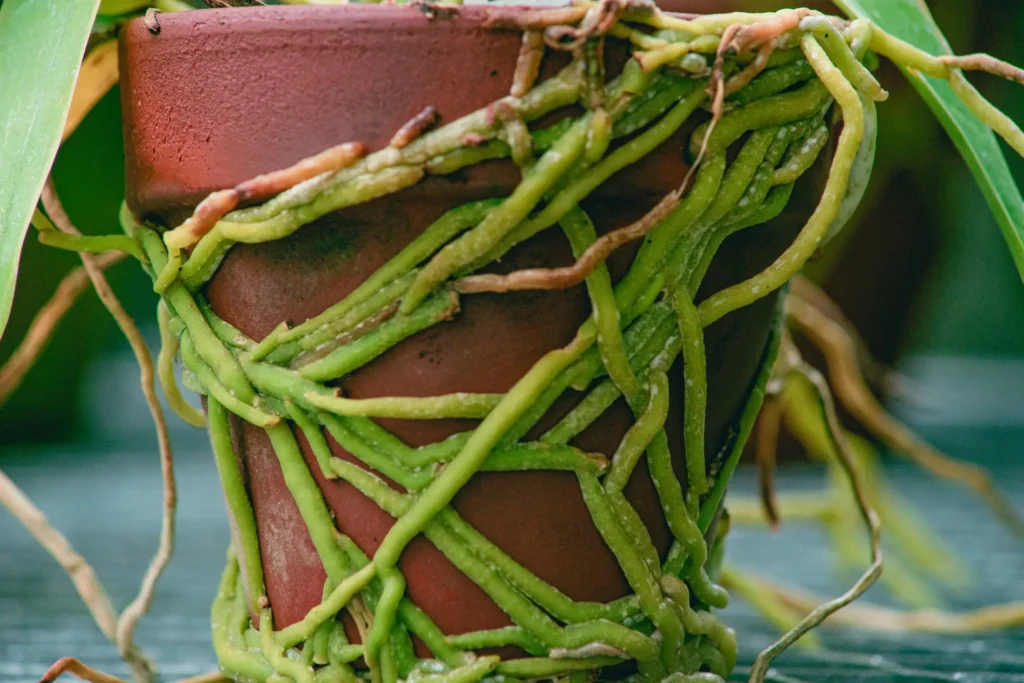
🟢 Green Roots
Silvery-green roots: “I’m healthy.”
Firm and full of life – after watering they turn bright, fresh green.
Constantly bright green roots: “You’re watering me too often.”
They’re grateful for your care, but maybe a little too much of it. Roots shouldn’t stay soggy all the time.
🟤 Brown Roots
Soft brown roots: “I’m drowning!”
If roots sit in water for days, they start to rot. Diagnosis: too much love.
Remove moldy or hollow roots – rot is serious, but a timely rescue brings orchids back quickly.
Dry, brittle brown roots: “I’m thirsty.”
Such orchids usually also speak through their leaves – leathery and wrinkled.
Phalaenopsis prefers to be watered about once a week by soaking the roots for 30 minutes.
If you’ve been walking past your plant for weeks without watering, trust me – she’ll want to talk about it.
🍪 Spotted Roots
Black tips: “You’re overfeeding me.”
Orchid roots should never turn black – that’s a sign of fertilizer burn.
Red dots: “Help! Fungal disease or pests!”
These could indicate mold from overwatering or even false spider mites. Healthy roots may have a light pinkish hue at the tips, and that’s perfectly normal.
3. When I Grow Up, I’ll Be…
Our last bit of orchid language has to do with growth behavior – another form of expression. Let’s translate a little more orchid-speak. :o)
You want your orchid to grow and bloom (literally). But growth often happens in phases – roots, leaves, or flower spikes may develop separately.
Growth also follows light and temperature changes, just like the seasons.
Leaves and flower spikes usually grow toward light, while aerial roots grow away from it.
Because we keep orchids in pots, some roots behave like aerial roots and some like underground ones.
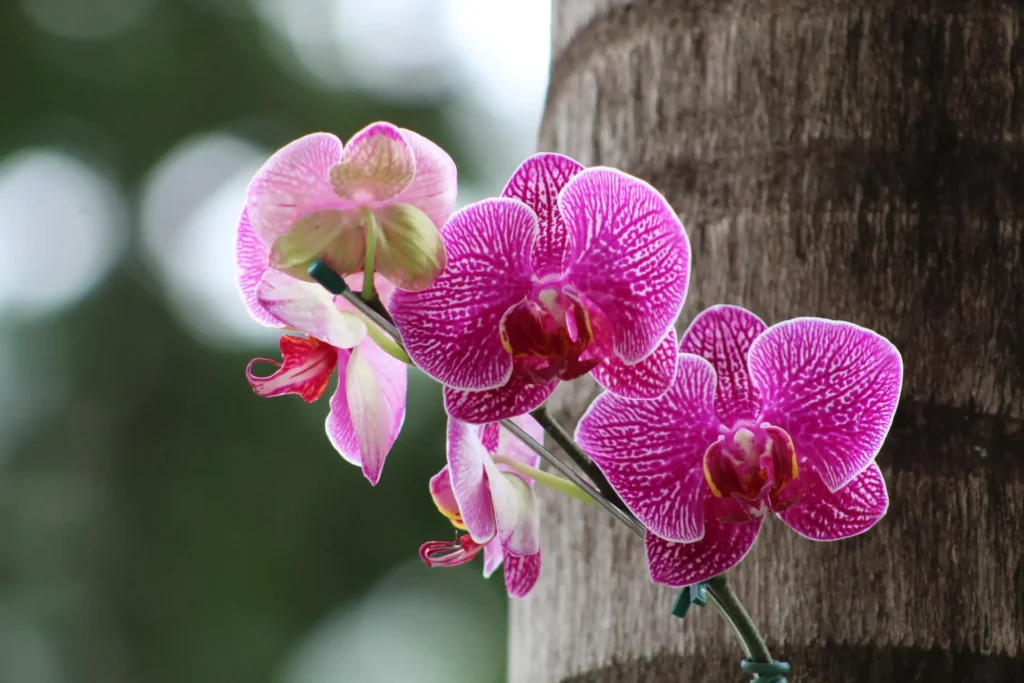
🌿 New Leaves and Roots
Both growing: “You’re giving me just the right balance of light and water.”
As if saying: “Keep it up, and I’ll reward you with blooms soon.” Patience always brings orchid flowers.
🌺 Flower Spike Growth
Thumb-shaped bump under the second pair of leaves: “I’m happy and about to bloom.”
That’s the message every orchid grower loves! If you’re unsure whether the bump is a root or a flower spike – the spike is shaped like a mitten thumb (mitten bump) rather than rounded. And soon, your orchid will crown herself with her gorgeous, colorful blooms. Congratulations!
🌱 Tiny Leaves on the Flower Spike
Little leaves instead of flowers: “I’m reproducing – baby orchids on the way!”
This is called a keiki (Hawaiian for “child”). Once the keiki develops its own roots, it’s ready to leave its mother and grow independently. Sometimes, though, orchids produce keikis as a survival response when they’re stressed – so check that the mother plant is still healthy.
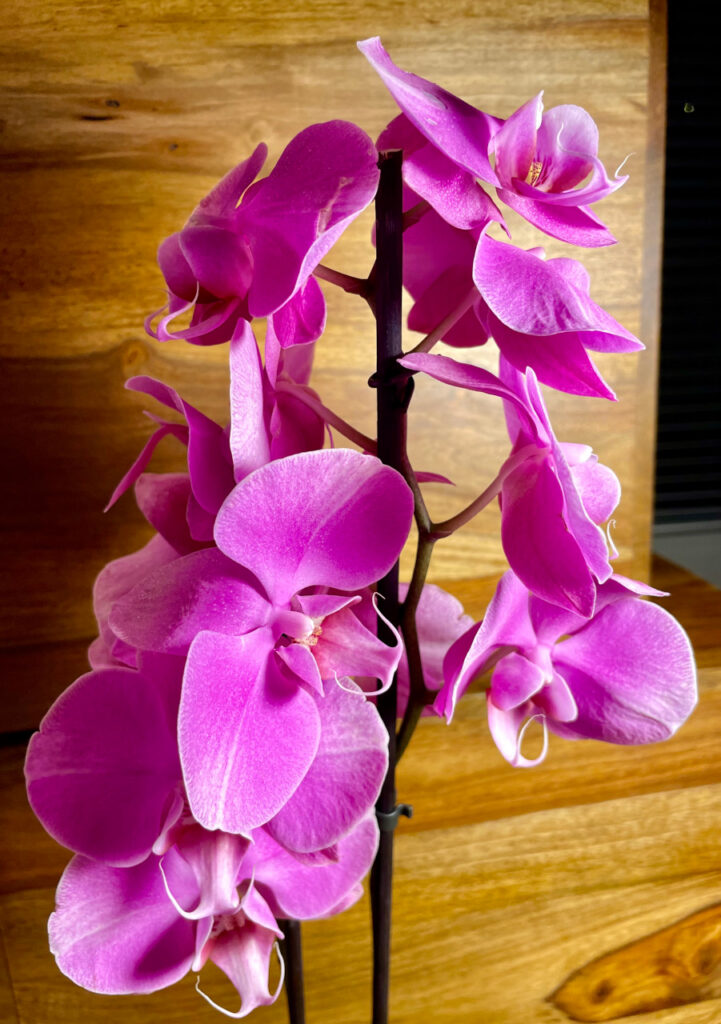
I wish you many pleasant conversations with your orchids – and may both sides exchange as many joyful phrases as possible.
Amarylka
Do you talk to your orchids, too? 😊
